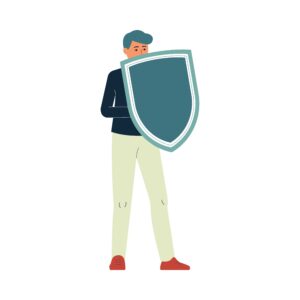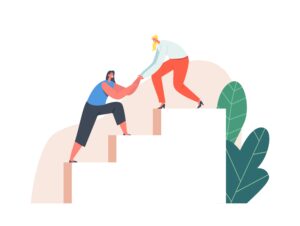 Are we always acting with intention? Sometimes, we are aware of it; other times, it seems like it’s just a reaction. Intention can also be a double-edged sword. In one way, it gives us confidence and enables us to use awareness. On the other hand, we can assign intention to a situation that just doesn’t add up.
Are we always acting with intention? Sometimes, we are aware of it; other times, it seems like it’s just a reaction. Intention can also be a double-edged sword. In one way, it gives us confidence and enables us to use awareness. On the other hand, we can assign intention to a situation that just doesn’t add up.
Intention shapes much of our interactions. It should be something we practice to become better humans. It’s a major part of my new book, The In-Between: Life in the Micro. In the book, I discuss my life and how I’ve shifted my intention to the in-between versus only using it for the big episodes of life.
What Does Intention Mean in the In-Between?
When you think of intention, you may have a very straightforward definition. You set a goal and do what you must to achieve it. Your intention is narrow, focused, and resolute. Those intentions can support success, but they also create an obsession with the macro.
Intention in the in-between is different. I had to snap out of a bubble of the macro to get to this place. Two life-and-death experiences nudged me into this new phase. I had time to reflect on regrets and missed opportunities. I realized my life of intention was as strong as a house of cards. It is only related to the macro.
Living intentionally in the in-between means I am open to all experiences. I don’t come into them with a negative mindset. I can be more patient and welcoming, and these intentions don’t waver even if circumstances arise that change the moment. In the past, such an incident would have made me frustrated and angry.
Acting with Intention in the Micro Creates Joy, Peace, and Connection
The payoff of acting with intention in the micro is the opportunity for joy, peace, and connection. In my book, I tell the story of an Ironman competition, which had been a macro goal for many years. This time was different. Instead of being consumed by the macro of finishing the race, I embraced the in-between and helped a fellow racer. In that moment of intention, I was living a value that was critical to me—helping others.
What I got from the moment was a connection to someone else. It supported my growth and demonstrated how intention was now firmly embedded into the micro.
Applying Intention to Any Moment
Our life is a collection of moments, big and small. If we look at each as a chance to apply intention, it becomes a habit. It’s about setting the tone. If we go into situations with a clear and open mind, we can take much value from them. Practicing intention is similar to being mindful and present. You’ll have to be deliberate about this. Eventually, it will become second nature to look at your day ahead in this way.
You can explore more about acting with intention in the in-between by reading my book.
 There are many variations of the concept of the loneliness of humanness. They say we are born and die alone. In between those two moments, we create connections and relationships so we aren’t alone in times of need.
There are many variations of the concept of the loneliness of humanness. They say we are born and die alone. In between those two moments, we create connections and relationships so we aren’t alone in times of need. Most of us are always trying to do the right thing. Except, we often get it all wrong. I came to this realization while I was recuperating from a health incident. I finally had time to reflect rather than constantly pushing toward accomplishing the next thing.
Most of us are always trying to do the right thing. Except, we often get it all wrong. I came to this realization while I was recuperating from a health incident. I finally had time to reflect rather than constantly pushing toward accomplishing the next thing. Everybody has the capacity to shift into defense mode. It’s a normal reaction to go into self-preservation behaviors. Sometimes, they occur when others are personally attacking us. Other times, they are more of a trauma response as we seek to protect ourselves. Other times, defense modes are a way to let ourselves off the hook when we are in the wrong.
Everybody has the capacity to shift into defense mode. It’s a normal reaction to go into self-preservation behaviors. Sometimes, they occur when others are personally attacking us. Other times, they are more of a trauma response as we seek to protect ourselves. Other times, defense modes are a way to let ourselves off the hook when we are in the wrong. Identity is fluid if you’re open to evolving and changing. Everything we experience impacts our identity. Mine was once very rigid and self-serving, even when I had the best intentions. However, I realized this wasn’t a healthy path to continue on, and I wanted to shift to a serving state.
Identity is fluid if you’re open to evolving and changing. Everything we experience impacts our identity. Mine was once very rigid and self-serving, even when I had the best intentions. However, I realized this wasn’t a healthy path to continue on, and I wanted to shift to a serving state.

